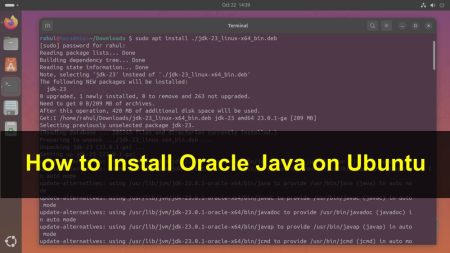Programming is a highly sought-after skill in today’s digital world. Whether you’re looking to start a new career or simply expand your existing skillset, learning to code is an excellent way to open up new opportunities. One of the simplest, yet most impactful, programs you can write as a beginner is “Hello World”. This program serves as an introduction to the basic syntax and structure of a programming language.
In this comprehensive guide, we will show you how to print “Hello World” in 20 of the most popular programming languages. This will provide you with a foundational understanding of how different programming languages approach the task of printing a simple message on the screen. So, get ready to dive into the world of coding and let’s get started!
Printing 'Hello World' in 20 Programming Languages
- Python
Python uses the
print()method to print a string on the console. The string must be enclosed under double quotes.print("Hello World") - Java
In Java, the
System.out.println()method is used to print content on the output console. This method prints the string and moves the cursor to a new line.public class HelloWorld { public static void main(String[] args) { System.out.println("Hello World"); } } - C Programming
In the C programming language, the
printf()function is used to print values on the output console.#includeint main() { printf("Hello World"); return 0; } - C++ Programming
C++ uses
std::coutalong with the stream insertion operator<<for output operations.std::endlis used to insert a new line.#includeint main() { std::cout << "Hello World" << std::endl; return 0; } - Ruby
Ruby uses the
putsmethod to output text with a newline at the end.puts "Hello World" - PHP
PHP uses the
echostatement to output one or more strings.<?php echo "Hello World"; ?> - JavaScript
JavaScript uses
console.log()to print messages to the web console.console.log("Hello World"); - Swift
Swift uses the
print()function to write the textual representation of the given items to the standard output.print("Hello World") - Go Programming
Go uses the
fmt.Println()function from the fmt package to print lines.package main import "fmt" func main() { fmt.Println("Hello World") } - Kotlin
Kotlin uses the
println()function for printing a line to the standard output.fun main(args: Array) { println("Hello World") } - R Programming
R uses the
cat()function to concatenate and print.cat("Hello World") - Perl Programming
Perl uses the
printfunction to output text. The newline character\nis used to move to the next line.print "Hello World\n"; - Scala
Scala uses the
println()method, similar to Java, for printing lines.object HelloWorld { def main(args: Array[String]) { println("Hello World") } } - Objective-C
Objective-C uses
NSLog()for logging, which is similar toprintf()but adds some extra information like timestamp and log level.#importint main (int argc, const char * argv[]) { NSAutoreleasePool *pool = [[NSAutoreleasePool alloc] init]; NSLog (@"Hello World"); [pool drain]; return 0; } - Shell Scripting
Shell scripting uses the
echocommand to output text to the terminal.echo "Hello World" - Assembly (x86) Programming
Assembly language for x86 processors uses a combination of system calls to write text to the console and to exit a program.
section .data msg db 'Hello World',0 section .text global _start _start: ; write(1, msg, 12) mov eax, 4 mov ebx, 1 mov ecx, msg mov edx, 12 int 0x80 ; exit(0) mov eax, 1 xor ebx, ebx int 0x80 - SQL Statement
In SQL, you can use the
SELECTstatement to output a string.SELECT 'Hello World'; - Rust Programming
Rust uses the
println!()macro for printing to the console.fn main() { println!("Hello World"); } - TypeScript
TypeScript, being a superset of JavaScript, uses
console.log()for printing messages to the console.console.log("Hello World"); - Lua Programming
Lua uses the
print()function to send text to the standard output.print("Hello World")
Conclusion
In conclusion, "Hello World" is a simple yet powerful program that helps beginners understand the basic syntax and structure of a new programming language. By printing "Hello World" in 20 popular programming languages, we hope to provide a comprehensive guide to help those new to the program understand how the syntax and structure of a program can vary between languages. Whether you are just starting out or looking to expand your skills, this guide serves as a valuable resource to help you get started. Regardless of the language you choose, the most important aspect is to keep practicing and building on your skills. Happy coding!

